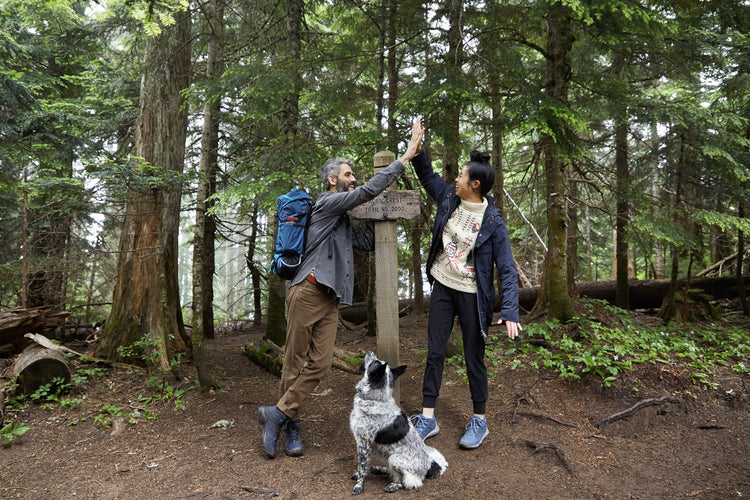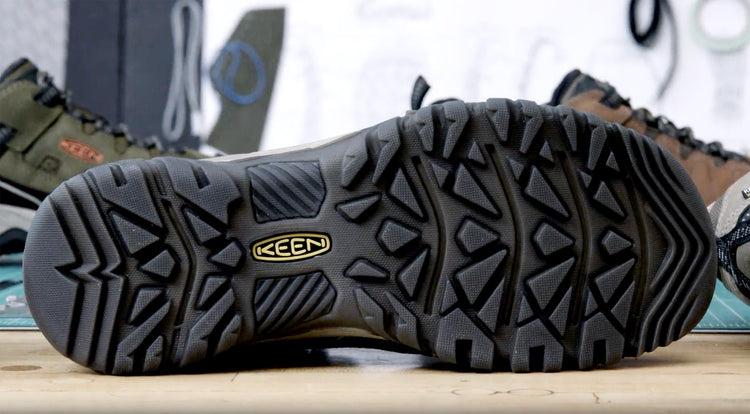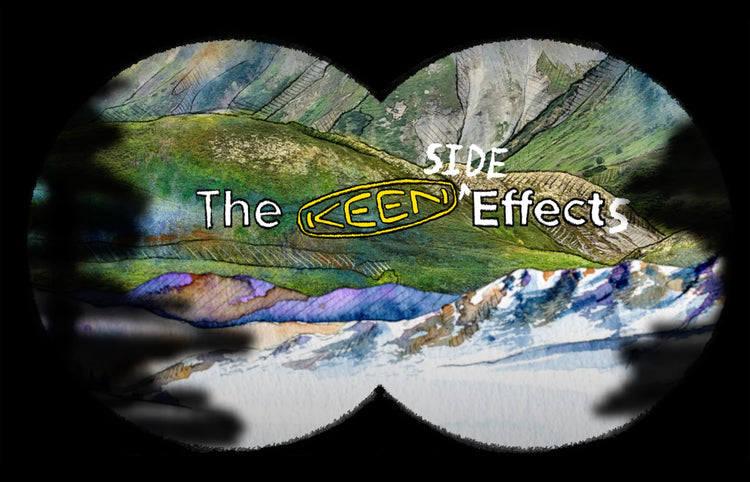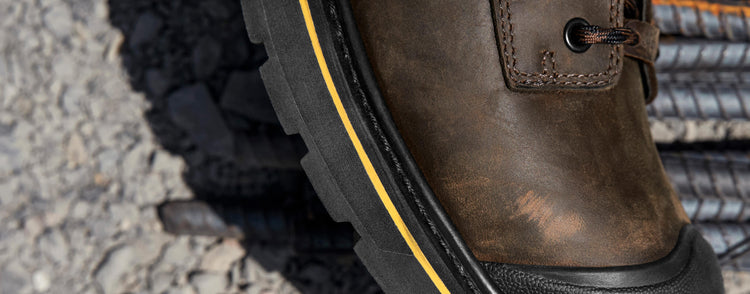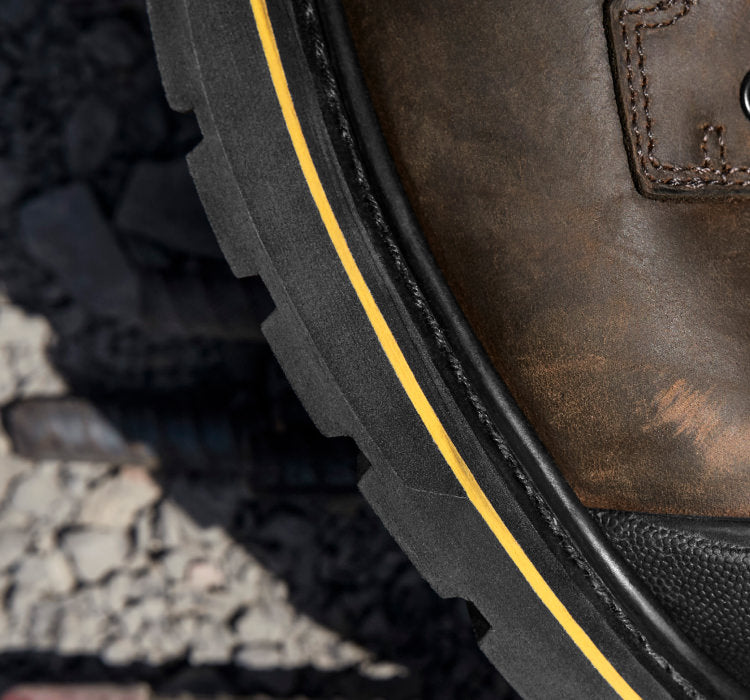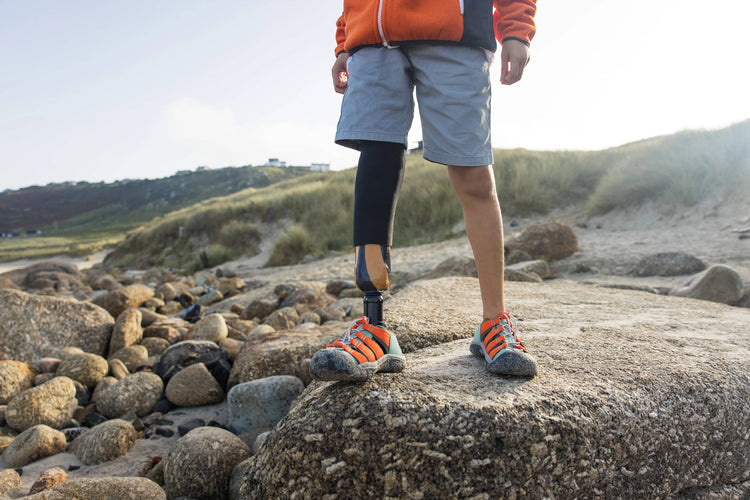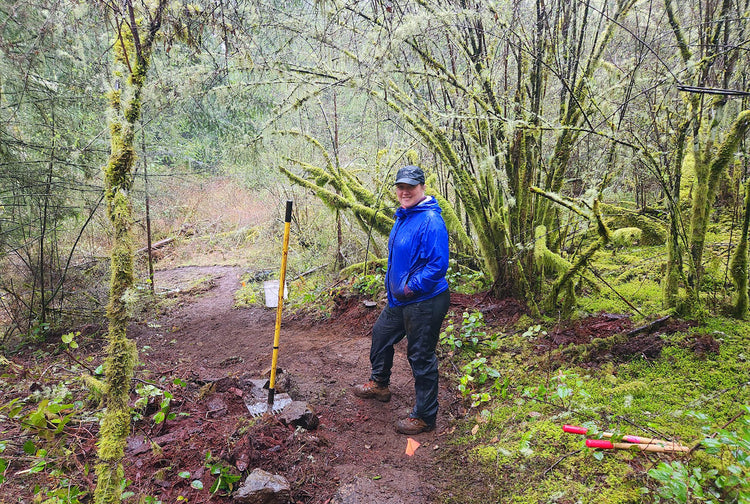What gear do I need? How much water do I bring? Can I hike in jeans? Getting into hiking can seem overwhelming at first. But just remember — once upon a time, even the most experienced hiker was just a beginner, lacing up their boots for their very first hike.
To jumpstart your hiking journey, we’ve pulled together our top 10 good-to-know hiking tips, so you can pack up, dress right, and hit the trail with confidence.
1. Learn the Lingo
Along with any new hobby comes a flood of unfamiliar terminology and jargon. Of course, learning the lingo comes with time, but here are a few hiking terms you’ll want to know before you throw on your day pack and head out.
Trailhead: The location where you access the trail. Typically this is where you park your vehicle.
Forest passes or day-use fees: Some areas and recreation sites require annual-use passes or a small fee to access the area. Forest passes differ by area and usually need to be purchased ahead of time. Day-use fees are typically collected at the trailhead.
Loop trails: Trails that start and end at the same trailhead and loop around so you see new sights throughout the whole hike.
Out-and-back trails: Trails that start and end at the same trailhead but have you turn around (usually at a natural feature perfect for lunch) and head back the way you came.
Point-to-point trails: Trails that start at one trailhead and end at a different one. These typically require you to have arranged a shuttle car or a friend to come pick you up.
Trail blazes or markers: Trail markers that indicate where the trail is located. These can come in the form of painted rectangles or signs on trees, posts with trail signs, or even stacks of rocks called cairns alongside the trail.
2. Location, Location, Location
Before you head out, spend some time choosing a hike that’s ideal for beginners. There are a lot of great internet resources and trail apps that let you filter by difficulty, length, elevation gain, and type of route. Since you’re just starting out, pick a hike that’s considered easy-moderate, under five miles, and doesn’t have much climbing (we’re talking less than 400 feet of elevation gain).
Once you’ve chosen a route, be sure you study it prior to the big day, and always have a way to reference the trail while you’re out there. If you’re unfamiliar with how to read a map, spend some time researching online (there are lots of informative videos out there). Or better yet, consider taking an “intro to navigation” course from your local Mountaineers Club or outdoor store. (This is a great way to meet fellow hiking buddies, too!)
Offline map applications and GPS/navigation systems are convenient but not always reliable. That’s why we recommend also bringing a paper trail map. Go for the coated, waterproof map (if it’s an option). You can also print your own at home, but just be sure to place it in a waterproof bag so that a little rain, a leaky water bottle, or your hard-earned sweat doesn’t ruin your map (and potentially your day).
KEEN tip: Consider purchasing your maps from local Ranger Stations. Rangers have a wealth of knowledge that they just love to share. Plus, they can offer real-time info that can help you on the trail (like whether there are any downed trees or closed trails).
3. Research the Area and Weather
The desert, forest, and mixed terrain areas are all great places to do a little off-road walking. But they can vary pretty drastically in terms of weather, wildlife, and potential hazards, so it’s important to get a sense of what to expect in the area that you plan to hike. Are there bears or rattlesnakes? Are flash floods or rock falls a possibility? Should I prepare for extreme heat or heavy rain? Spend some time researching to better prepare yourself, and always be sure to check the weather so you can plan accordingly.
KEEN tip: Being adequately prepared for the weather is one of the most important aspects of successful hiking. Check the weather forecast the day of your hike through a trusted agency such as NOAA. Even if there’s only a small chance of rain, bring the right gear. If the forecast suggests something that you don’t have the right gear for, hold off and choose a better day to try out that trail.
4. Pack the Essentials
Way back in the 1930s, the Seattle Mountaineers Club developed a list of essentials for outdoor adventures. Over the years, the list has evolved but remains fundamental to staying prepared when heading outdoors. From sufficient food and water to sun protection and emergency first-aid supplies, the Ten Essentials are an absolute must when it comes to packing your backpack for hiking.
KEEN tip: Our 11th essential here at KEEN is a little cash in small bills. This is nice to have in case there is a day-use fee that you didn’t know about.

5. Choose the Right Gear
When you’re first getting into hiking, gathering all the gear can feel a little bit mind-boggling. Hiking boots, hydration packs, SPF clothing, rain protection, liner socks—the list goes on and on. Although all that gear can be helpful, when you’re first getting started there are really only a few things you need.
Footwear that fits is a big one. And we know a thing or two about finding the right hiking boots, sandals, or shoes. Whether you’re trekking through damp forests or dry and dusty terrain, good footwear should be your top priority when it comes to hiking gear. After all, your feet are heavily involved with the task. Check out our guide to finding the perfect pair of boots or, for warmer days, hiking sandals.
Comfortable clothing is key. Sure, fancy hiking clothes with SPF treatments and perfectly-placed pockets are wonderful, but to get you started, just choose clothing that’s easy to move in and preferably not cotton. (Once cotton gets damp from sweat, it can cause chafing and irritation, and just feels downright clammy.) Go for synthetic materials instead. Workout clothes are great!
A decent backpack and (of course) the 10 essentials are a must. Until you can invest in a hiking-specific backpack, just use what you have. Try to find one with padded shoulder straps and external pockets. This will help you avoid shoulder pain and keep your water bottle and snacks easily accessible.
Weather- or area-specific gear is also something to pack if needed. Cold and drizzly? Pack a rain jacket and a warm hat and gloves. Bears in the area? Pack a bear bell and bear spray.
6. Share your trip plans
Always be sure to share your route and hiking plan with someone back home. Should anything happen, it’s important that a friend or family member know where you headed to and when you’re expected to be back.
7. Know Hiking Etiquette
After a few hikes, these guidelines will become second nature, but before you hit the trail, it’s important to understand the basics of hiking etiquette. From moving off-trail when taking a break to yielding to uphill hikers, knowing trail manners is a must. Check out the full guide from the American Hiking Society.
8. Leave No Trace
Sure, hiking is about spending time outdoors and filling your lungs with that fresh mountain air, but it’s also about doing so responsibly. The 7 Principles of Leave No Trace are guidelines that help humans minimize their impact on the outdoors while still enjoying its splendor. Before your first hike, spend an evening getting to know the principles so you’re prepared to pack out your trash, dispose of human waste properly, and enjoy nature and wildlife respectfully.
9. Pace Yourself
One of the most rewarding things about hiking is being able to explore remote places where only your feet can take you. That’s why you shouldn’t overdo it. Some new hikers want to go all-in and make the mistake of starting with too many miles, too much elevation gain, or kicking things off at a grueling pace. Remember to start slow and ease yourself into the experience of hiking. That way you’ll actually enjoy yourself (and your body won’t be so broken that you can’t hike again next weekend).
10. Enjoy the Experience
Remember to stop and smell the flowers. For real. There’s no rush. Try to be present and mindful of your time out in nature. Every so often, take a break, look around, and open all of your senses to the fascinating, awesome, and miraculous world that we get to call home.
Happy hiking!

